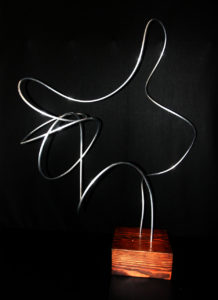Hans Van de Bovenkamp
Renowned for his monumental sculpture created primarily for open-air public locales, Hans Van de Bovenkamp has been described as an artist-mystic whose work with its signature power, lyricism, and grand proportions heightens the viewer’s sense of imagination and discovery. He has earned an international reputation over the past 50 years for designing, fabricating, installing and maintaining unique sculptures and fountains in collaboration with architects and designers. “The studio is my playground, my laboratory, my sanctuary, where I practice and experiment with creative ideas. When I am working I am truly living in the present moment.” His most recent creative endeavors include paintings and works on paper. Website: www.vandebovenkamp.com
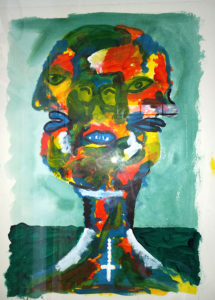

Michael McDowell
Michael McDowell paints in the Hamptons, but his palette and mind seem elsewhere. Bodacious sirens swooning in all manner of come hither poses, dogs leaping through space, and idyllic watery landscapes. This is art for the straight guy, a visual tour through the fantasies of a regular Joe whose thoughts are miles away from the recession and the East End’s winter gray. The Southern California colors of David Hockney and the urbane juxtapositions of James Rosenquist come to mind.
McDowell explores a wide range of subjects and styles and often uses several iconic images repeatedly in his paintings . Often his work shows a split canvas of a seductive woman whose face is striped with sunlight, as if filtered through Venetian blinds, on the top half and a gleeful airborne yellow Lab beneath. Website: michaelmcdowellstudio.com
Barbara Bilotta
“Barbara Bilotta considers herself an Abstract Expressionist. The striking abstract patterns in her works are more than just arrangements of colors and shapes. Her love of nature animates those patterns, forging a connection between pure abstraction and organic forms. Thanks to that link, a flowing arrangement of colors will also evoke the textures found in a rock’s surface or a body of water. There is an elemental strength in her images that grounds them, setting up a contrast with the artist’s dynamic use of colors and shapes. “My goal,” she says, “is to transform the natural order into a suggestive interpretation to stimulate the imagination.”
The surface of my paintings is also the result of an intriguing contrast. I work mostly in acrylics glazed with resin, and the acrylic’s softness and the resin’s hardness combine to create a “charged atmospheric space” in which the viewer is made to feel the movement of the paint. Website: barbarabilotta.com
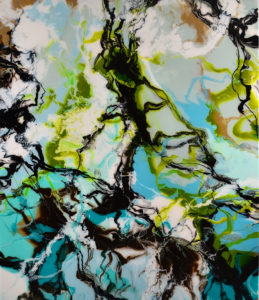
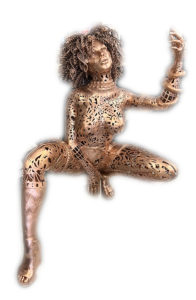
Michael Cardacino
Michael Cardacino is a multimedia artist who lives and works in Springs, East Hampton, NY. My art, realized in sculpture, installations, stills and performance pieces on paper and video, evidences an unusual representational take on how art can expand awareness and create a shared experience of timely events, and provoke a constructive conversation about the causes of suffering and conflict in the world.
My work, built with popular images and ideas appropriated from the streaming collective consciousness – including the Internet, TV, movies, cave painting, standup comedy and my own photographs – constitutes a kind of sensory language that can be easily read, the purpose of which is to foster compassion through recognition and understanding.
Zoe Denahy
“I describe my paintings as geometric abstractions. I see spatial planes that recede to a distant horizon line. Using color, light and form, I try to create a sense of balance, the paint lends itself to an airy atmosphere. Brushstrokes and marks are broken down into a simple form. I only use what I feel is key to the expression, nothing superfluous. This creates a visual language that I find pleasing.”Website: www.zoedenahy.com
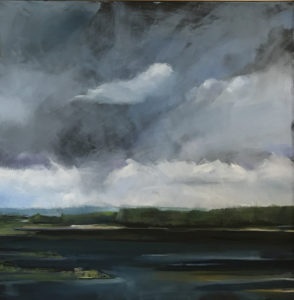
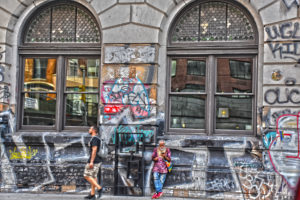
Paul Dempsey
Paul Dempsey, a computer programmer and Webmaster by trade, describes himself as a fine art photographer and a “digital manipulator.” His keen vision captures ordinary details from daily life and transforms them into images of beauty and wit, filled with contrasting shapes and effects.
Paul’s current series of abstract work focuses on macro images of nature combined with additional exposures of ice, snow, sand, and sky. These futuristic scenes, inspired by the writings of Kurt Vonnegut, offer a wry commentary on global warming and climate change.
This year Paul exhibited at Art Basel, Miami, specifically Spectrum Art, under the representation of Artblend Gallery, Ft. Lauderdale. Website:hamptonsgateway.com
Joyce Riamondo
Joyce Raimondo’s vibrant paintings, illustrations, murals, and art books, turn outward, celebrating her playful creativity and joy. Referencing her autobiography, her sculpture turns inward expressing emotional intimacy and vulnerability. Ms. Raimondo has exhibited in New York City and East Hampton where she resides. Her solo exhibitions include A.I.R Gallery in Manhattan – the noted feminist art gallery, Queens College, and numerous group shows including Soho 20, Guild Hall of East Hampton, Ashawagh Hall, and others. Website: joyceraimondostudio.com
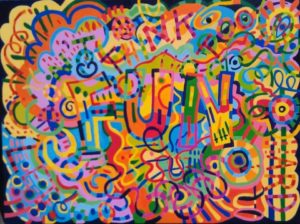

Donna Corvi
Trees and branches have always played a thematic subject matter in my works. Most of my paintings of trees are “leafless”. I prefer the graceful, skeletal bare trunks and limbs that lie beneath, that are hardly noticed, where life lies dormant and waiting.
My former career as a NYC illustrator for 20 years has lead me to full time painting using acrylics on canvas, and painting only what inspires me.
Frank Latorre
Artist, musician and founder of the Kingbees
Frank Latorre is a Five time winner of the Long Island blues to Memphis challenge
2014 Grammy certificate best blues category
Oh and Doc D in New York, blues Hall of Fame TV right now.
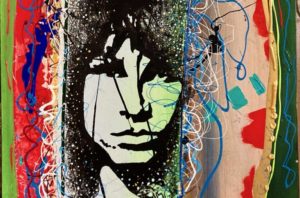

Oliver Peterson
“Mixed media artist, photographer and award-winning journalist Oliver Peterson finds inspiration in graffiti, structural decay, the pop zeitgeist, literature, politics, history, religion and his personal experience. The diverse subject matter drives the artist’s work to challenging places, but Peterson’s paintings are very much about the media from which they are built. The artist frequently experiments with paint and patinas and often applies random studio detritus to compositions that have been described as energetic, complex, masculine, dark, and even gentle. While Peterson’s paintings brought him to be chosen as a Long Island Pulse Artist VIP in 2008, and his pieces have been featured in The New York Times, NY Daily News, Newsday and nearly all of the East End/Hamptons publications, he took a break to explore photography, shooting exciting compositions using toys and miniature dioramas, often handmade from scratch, to create scenes, usually of war or characters from pop culture.
Rosalind Brenner
Creating in various mediums is for Rosalind Brenner an artistic-spiritual betrothal. Just as it is for all people who want to give meaning to life, who love the challenge of working creatively or intimately with heart, hands and head. Handling materials, learning, exploring, beauty and mastery, be it pilot and plane, the athlete and her body, the mathematician’s problem, dancer and form. Making art transcends the everyday and is transport into an inexplicable realm. It is that realm that she expresses in her work. She is a painter and poet. Her stained glass is in the homes of many collectors as well as in churches, synagogues and offices throughout the tri-state area and beyond. Her paintings are collected by many patrons. Rosalind has years of experience teaching stained glass in New York City, Great Barrington, and at the D’Amico Institute. She has a love of art and paintings making art that began in childhood and to which she has dedicated her many years as a professional in the glass world as well as in painting and writing.
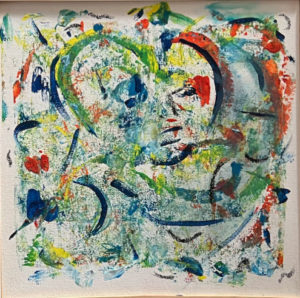
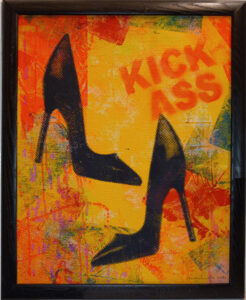
Geralyne Lewandowski
“I began printmaking at Pratt Institute focusing on the serigraphic technique as applied to canvas. The images I created were my personal re-interpretation of Pop Art. Often irreverent and focused on sexual innuendo and satire as inspired by the Manhattan Club scene of the 1970’s & 1980’s. Images influenced by Andy Warhol, Peter Max and David Bowie. More recently my work involves re-purposing my serigraphic prints with mixed media. Currently my technique is to make each serigraph unique by hand painting each background with a distinct color pallet and after print splatter, stencil and spray paint, thereby making each print, one-of-a-kind.” Website:lewandowskics.com
Lieve Thiers
“My paintings have no accepted meaning no representation of an object.
They are a quest for a personal expression against conventions, preconceived ideas,
and traditions
I liberate these emotions by creating a new pictorial life. Through spontaneous gestures,
the use of variations of lines and strokes, rhythmic movement and
color a new unexpected emotional world comes into existence.
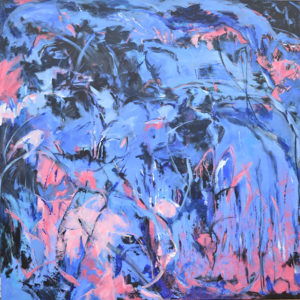
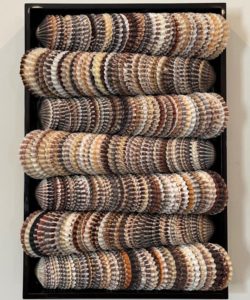
Jody Cukier
Perched on the edge of Shinnecock Bay, I work with seashells and marine-life fragments to create small sculptures and abstract assemblies that I photograph. I look for beauty in that which is broken in the fragments I gather from the water’s edge. The way elements of design endure, despite a tumultuous journey, is just one of the many lessons to be learned from nature. What began as a personal exercise 10 years ago, when my daughter was killed crossing the street for a school bus, has since evolved into a multi-faceted art form. (When there are no words, there are seashells.) I try to capture the visually rich, physical properties of the specimens I collect, as well as the calm of the texture, rhythm and repeats they contain, much of which was presented in my first solo exhibition, “Come Shell or High Water” at a NYC gallery.
Deeply immersed in the East End art community, I appear regularly in group and juried exhibitions, solo presentations such as a PechaKucha at the Parrish Art Museum, the Pollock- Krasner House, South Fork Sea Farmers TV, as well as images and stories about my work published in Southampton and Sag newspapers. Website: www.jodycukier.com
Ronnie Grill
Art is my passion. The beauty of the universe with it’s varied shapes and colors is my inspiration. In recent years, my work is predominantly in acrylics and collage. In addition to my art related to the universe, my world travels are also an inspiration for my body of work. My pleasures are also derived from being able to interpret the customs of different cultures throughout the world.


Susan Friend
Words are often inadequate to capture the images that touch our hearts. Much of my work is inspired by water in all it’s forms.Painting to me is the vehicle to express the feelings that I have about nature. I paint in oil as I love the juicy feeling under my brush.
As my work has evolved I have moved towards the edge of abstraction. And I like living on that edge as I do not want to dictate what the viewer should experience but instead participate by bringing their feelings to what they are seeing. I do however hope that they know that nature is my inspiration.
My process is to observe and feel my experience. I then paint from those feelings and not photos. My studio in filled with windows and light that allows me to continue to see the nature that surrounds me.
Jacques Leblanc
Through his art, Jacques has transcended his childhood of isolation and loneliness. He has done this by creating landscapes that the viewer experiences as a sort of waking dream. The effect is both magnetic and haunting. The medium he uses is a combination of photography and painting. Using this approach, he hopes to be able to produce a timeless, almost dreamlike appearance to his work, similar to how a memory or dream might appear. Whenever possible, it is a feeling of nostalgia that he hopes a viewer of his work will walk away with.
LeBlanc is best known for his unique East End landscapes. He had a 35 year career in education, teaching architecture and design related courses and since retiring in 2008, he has devoted himself to an in-depth study of what dreams look like, called Oneirology, and has used the research found in those studies to produce his unique style of art. Website: www.JacquesLeBlanc.net
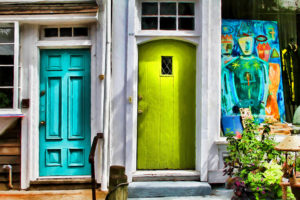
Setha Low
Setha Low is best known for her organic anthropomorphic sculpture made from multiple clay bodies, worn clothing, leather, metal, wire and mesh. The theme of separation and re-integration of the human body/psyche pervades her ceramic torsos, wired sculpures and dry point prints. Her use of blouses and tee-shirts painted with messages, over stuffed with mesh, often hung on wire or silk hangers create a sense of temporal urgency and spatial flow. While the subject matter of each body of work determines the materials and its form, she prefer materials that can be manipulated intuitively and that reflect the intensity of their handling as she works.
